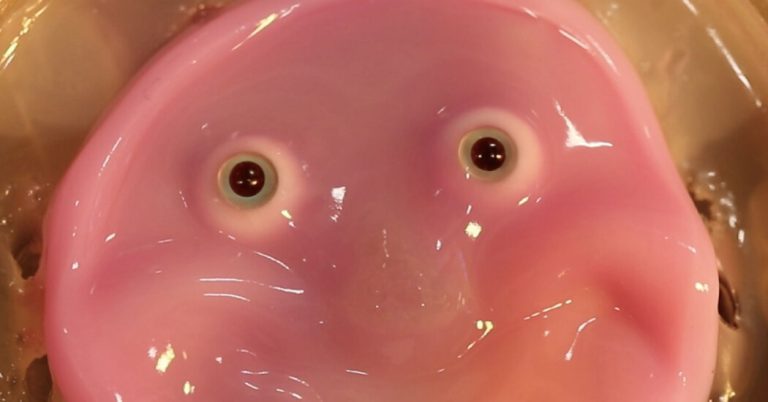Engineers in Japan are trying to make robots mimic that particularly human expression – the smile.
They created a face mask from human skin cells and attached it to a robot with a new technique that hides the attachment and is flexible enough to turn into a grimace or a wry smile.
The result is something between a scary Hannibal Lecter mask and a Claymation Gumby figure.
But scientists say the prototypes pave the way for more sophisticated robots, with an outer layer both flexible and durable enough to protect the machine while making it appear more human.
Expressiveness aside, the “skin equivalent,” as researchers call it, made from living skin cells in a lab, can scar and burn and also heal itself, according to a study published June 25 in the journal Cell Reports Physical Science. .
“Human faces and expressions improve communication and empathy in human-robot interactions, making robots more effective in health, service and companionship roles,” said Shoji Takeuchi, a professor at the University of Tokyo and lead researcher of the study. E-MAIL.
The research comes as robots become increasingly ubiquitous on factory floors.
There were 3.9 million industrial robots working on automotive and electronics assembly lines and other work settings in 2022, according to the International Federation of Robotics.
A subset of the overall robot stock includes so-called humanoids, machines designed with two arms and two legs that allow them to work in environments built for humans, such as factories, but also in hospitality, healthcare and education.
Carsten Heer, a spokesman for the federation, said that humanoids were “an exciting development area” but that mass market adoption would be complicated and could be limited by costs.
However, in October 2023, the Chinese government announced a goal of mass-producing humanoids by 2025, which it predicted would greatly increase its industrial productivity.
For decades, robotics engineers have experimented with materials, hoping to find something that could protect a robot’s complex machinery but be soft and light enough for a wide range of uses.
If a robot’s surface is bumped or scratched, it can cause the machine to malfunction, making the ability to self-repair a “critical feature” for humanoid robots, the researchers report in the paper.
The new skin-attachment method advances the nascent field of “biohybrid” robotics, which integrates mechanical engineering with genetics and tissue engineering, said Kevin Lynch, director of the Center for Robotics and Biosystems at Northwestern University.
“This study is an innovative contribution to the problem of anchoring artificial skin to the underlying material,” said Professor Lynch, adding that “living skin may help us achieve the holy grail of self-healing skins in biohybrid robots.”
He added that the study does not examine how the robots’ skin will heal itself without external support.
For such robots, the materials challenge extends to verisimilitude — finding ways to imbue the machine with features that make it look and act more human, such as the ability to smile.
Scientists, including Professor Takeuchi and his colleagues at the University of Tokyo, have been working with laboratory human skin for years.
In 2022, the research team developed a robotic finger covered in living skin, allowing the machine’s digit to bend like a human finger, giving it the tactile ability to potentially perform more precise tasks.
Professor Takeuchi’s team had tried hooking the skin with mini hooks, but these caused tears as the robot moved. So the team decided to mimic ligaments, the tiny ropes of loose tissue that connect bones.
Team members drilled small V-shaped holes in the robot and injected a gel containing collagen, which plugged the holes and bonded the artificial skin to the robot.
“This approach incorporates traditional rigid robots with soft, biological skins, making them more ‘human’,” said Yifan Wang, an assistant professor in the school of mechanical and aerospace engineering at Nanyang Technological University in Singapore who researches biologically mimicking “soft robots” creatures.
Skin bonding also gives a bio-hybrid robot the ability for sentience, taking science one step closer to sci-fi fantasy.
“This could create opportunities for the robot to sense and interact safely with humans,” Professor Wang said.
The robot faces with artificial skin in Professor Takeuchi’s lab do not have the ability to sense touch or temperature change or other external stimuli.
Professor Takeuchi said this is his next research goal.
“We aim to create skin that mimics the functionality of real skin by gradually building key components such as blood vessels, nerves, sweat glands, sebaceous glands and hair follicles,” he said.
In place of the nervous systems that convey sensation in a human body, a robot’s electronics would have to feed a sensor signal – a development that Professor Wang said would require much more time and research.




